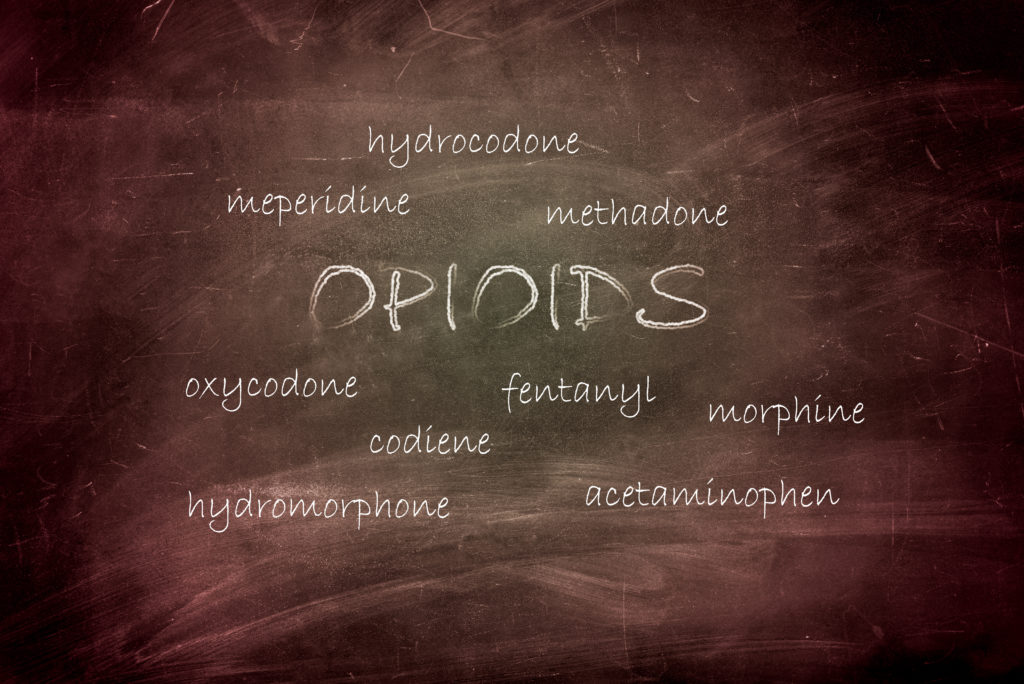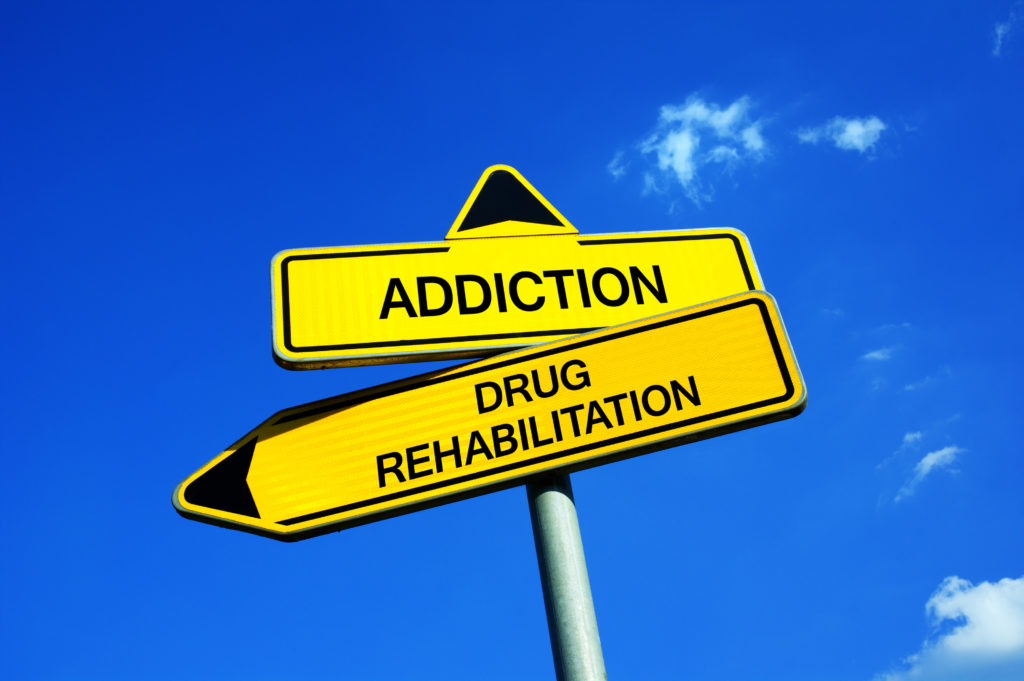What is Lortab?
Lortab is a well-known brand name prescription painkiller. The combination of Hydrocodone and acetaminophen make up this medication. Doctors prescribe Lortab for patients who experience moderate to severe physical pain.
Hydrocodone and acetaminophen work together to block excessive pain from registering in the body. Hydrocodone is a popular opioid that has strong pain relief qualities but is also highly addictive. It works to relieve pain by binding to the opioid receptors in the brain and releasing a sense of pleasure throughout the body. In a sense, this “tricks” the brain into thinking pain is not present and therefore delivers temporary relief.
Acetaminophen is not an opioid, but it is an analgesic (an-all-jee-sick) which is a drug that relieves pain. The most popular brand is Tylenol, which many of us know helps relieve headaches, muscle aches, arthritis and reduces fevers. It works by lowering the levels of prostaglandins, which is a chemical that signals the body’s nerves to feel pain.
Combining these two drugs into one serves as a powerful opioid pill that comes with general side effects. It can pose issues for potential addiction in many individuals. In fact, Lortab (along with many other opioid-like medications) are known to be some of the most abused drugs in the United States.

Who Uses Lortab
People who begin to use Lortab for medical purposes do so with the goals of relieving pain. Pain may be due to the aftermath of an intense surgery, healing broken bones or sprains, back injury, migraines, post-traumatic physical injury, and other instances that cause severe pain. It can also be used occasionally to treat particularly bad coughs.
The use of Hydrocodone in most cases is only put into effect if other, less risky painkiller medications show to be ineffective for the patient being treated. It can be useful for temporary pain during injury recovery, or for people with chronic pain for which no other pain relief seems to work. Most importantly, Lortab is never intended for continual use over a long period of time.
Why Do Some People Use Lortab Recreationally?
Almost any drug can be put to use in a recreational manner, but that doesn’t mean it’s fully safe or effective. Hydrocodone has been known for its recreational drug use. An estimate of over 2 million people abuses hydrocodone drugs for nonmedical reasons.
Since Lortab produces a euphoric, pleasing sensation in the attempts to block pain from being registered, the first several uses of Lortab (Hydrocodone) can be enjoyable. However, the danger here is that after a few uses, tolerance builds up in the user. Tolerance means it will take a higher dose of the drug in order for someone to feel the same effects they once felt on only the smallest dose.
Even though Lortab contains acetaminophen and not just Hydrocodone, the feeling effects of the opioid are strongest. Hence, some users who don’t even need painkiller medications can still obtain, misuse and abuse Lortab. It is only legal for Lortab to be prescribed by a licensed physician or medical professional. So, any transaction or selling of opioid drugs outside of a medical setting is considered illegal.

Lortab Side Effects
The side effects Lortab provides are most similar to Hydrocodone. The most common side effects that come with the use of Lortab include the following:
- Constipation
- Stomach aches
- Lingering mild nausea
- Dry mouth
- Sleep disturbances
- Muscle aches, tension, or tightness
- Involuntary trembling or shaking of body parts
- Swelling
- Fatigue
- Headaches
- Noticeable ringing in the ears
- Frequent urination
- Itchiness or irritation of the skin
Some more severe Lortab side effects and Warning Signs you should be aware of include:
- Vomiting
- Diarrhea
- Anxiety or panic attacks
- Blurred vision
- Mood swings
- Allergic reactions appearing as serious skin rashes
- Unclear or foggy thinking
- Confusion; delirium
- Complications during pregnancy (should be avoided in pregnant women)
- Liver damage (from extended acetaminophen use)
People who should NOT use Lortab include pregnant women, people with respiratory issues such as asthma, individuals with any past history of drug abuse, or those with intestinal problems.
How is Lortab Addictive?
The risk of addiction while using Lortab is so high because of its semi-synthetic opioid properties. For someone using Lortab for pain, several things can contribute to the forming of dependency and eventually a full addiction.
As the person using Lortab becomes accustomed to its effects, the original dosage he or she began with might wear off over time. Tolerance goes up, requiring more of the drug to feel the desired effects and reliefs. Therefore the patient might try to increase the dosage. The logic here is: the larger the dose, the better I’ll feel. However, this is not the case. Increasing dosage without the approval from a doctor can be quite dangerous.
Hydrocodone affects the part of the brain that regulates dopamine and is known as the “pleasure center” of the brain. Dopamine releases upon consumption of Lortab, improving the sense of euphoria and diminishing the feeling of pain throughout the body. When someone becomes so dependent on Lortab or others opioid medications, their brain gets used to the amount of chemical influence it provides day to day. Increasing dosage through the addiction process can lead to accidental overdose.
Other factors, which can vary from person to person, can influence the likelihood of forming an addiction. Such factors include genetic history, psychological health, environmental influences (such as stress, wanting to escape difficulty, etc.), and biological reactions to the drug.

How to Know What Lortab Looks Like
Lortab comes in a pill tablet form. Tablets come in prescription bottles. They can range in color from white, pink, yellow, grey, and white with speckled colors. The pills are available in several doses, but each dose depends on individual needs. The way to understand the doses of a Lortab tablet is listed as: number of Hydrocodone (mg) / number of acetaminophens (mg). The list of different dosages for Lortab include:
- 2.5mg/325mg
- 5mg/300mg or 5mg/325mg
- 7.5mg/300mg or 7.5mg/325mg
- 10mg/300mg or 10mg/325mg
Symptoms of Lortab Addiction:
Someone showing any signs of the side effects above is an indicator of Lortab use. However, there are more specific symptoms to take note of. This depends on mood, psychological, physical, and behavioral symptoms.
Physical symptoms of Lortab use or abuse:
- Shallow, slow breathing
- Slow heart rate
- Weakness
- Headaches
- Lightheadedness
- Muscle twitches
- Hearing loss
- Fainting
- Constricted pupils
- Seizures (in extreme reactions)
Psychological reactions:
- Memory loss
- Fatigue
- Confusion or slow thinking
- Anxiety
- Paranoia
- Difficulty focusing
- Delusions or hallucinations (in extreme responses)
Behavioral signs:
- Suspicious behavior
- Lying, stealing, manipulative behavior
- Financial issues
- Going between doctors to try to obtain more prescriptions from different hospitals
- Lack of communication
- Isolating or withdrawing from friends and family
- Impulsive behavior
- Mood swings, outbursts of anger, abnormal reactions to daily situations
- Constant obsession over prescription drugs, where to get more, taking more than prescribed, etc.

Lortab Withdrawal
After the individual addicted to Lortab begins to come off the drug, withdrawal occurs. Withdrawal is when the substance which the body and mind have grown accustomed to is now detoxifying from the system. Hence the tolerance that has built up is no longer being supplied to the body as it has adjusted to.
Those who experience addiction to Lortab may feel higher or lower adverse side effects during withdrawal. The most common withdrawal symptoms include:
- Irritability and agitation
- Aggression
- Anxiety or Depression
- Nausea, vomiting
- Physical body aches and pains
- Changes in appetite
- Insomnia
- Stomach pains and cramps
- Cold chills throughout the body
- Muscle spasms, trembling, twitching involuntarily
- Sensitivity to light and sound
- Dizziness
- Increased sweating and urination
Beginning Stages of Withdrawal
The first stages of the withdrawal phase can be the most intense and challenging part. Generally, the early 24 hours to three days are the worst part of withdrawal. Vomiting, diarrhea, persistent cravings for the drug, extreme mood swings, and dizziness are the most frequently seen side effects during these days. This time is when it is most recommended that you seek help in a medical setting to avoid potential dangers of detox.
After day two or three, physical withdrawal symptoms will still be present but not as intense. Headaches, body pains, nausea, excess sweating, and dehydration are the most common. Make sure to drink plenty of clean water and fluids so your organs can adequately flush out any remaining toxins from detox.
By day five of the withdrawal, most of the uncomfortable physical feelings will be at a minimum. At this time is when the psychological and behavioral symptoms might rule most present. Sleep difficulties, feeling irritable, and experiencing anxiety or depression are the main side effects to expect during this time.
Within seven to ten days, most of the side effects from withdrawal should be clear for the most part. There is still a chance of post-acute withdrawal syndrome, as with any drug.
Assistance through Withdrawal
Never attempt to go through Lortab withdrawal alone, because there can be a list of damaging risks is withdrawal goes unattended. It is highly recommended to seek professional care and supervision of a medical treatment center. Support through detox and withdrawal can prevent relapse, heart issues, stroke, and death.

Offering Help for Lortab Addiction and Detox
If you or someone you love needs support for overcoming a Lortab withdrawal, reach out for help. Explore the options for drug rehabs near you. Medically-assisted treatment can prove to be active with certain people coming off an addiction to opiate prescription drugs. Detoxing under the care of a caring medical professional is the safest bet when it comes to entering into a successful recovery.
Interventions for families or loved ones can be a great idea if you feel a need to intervene and offer rehab options for someone you know. Interventions can work quite well in certain situations. Sometimes they can even save a life. Although it might seem intimidating or scary to plan an intervention, with the help of an interventionist you can see results. The goal of an intervention is to express to the addicted person how much you and your family cares for him or her. Hopefully, the meeting acts as a wakeup call to the loved one and encourages them to agree in committing to a rehab treatment program where they can become sober.
Where to Find Treatment for Lortab Addiction
Recovering from addiction to Hydrocodone and similar prescription pill drugs is possible. You first simply need to be willing to overcoming your addiction, and also know the options that can benefit you through the recovery process. For example, there is inpatient rehab, outpatient treatment, residential or live-in addiction treatment.
Choosing a drug rehab can be tricky, but we can help. If you call our Addiction Helpline, you can talk to one of our caring professionals about any questions or assistance you might need. Coping with addiction can seem challenging. However, we have seen thousands of families find hope and success in recovering from the damages of past addictive habits. Don’t hesitate to ask for help.
Sources:
National Institute of Health: Hydrocodone Overview
RX List: Lortab
Lortab Drug Label Information
Pain Control Over-the-Counter Medications
Additional Resources:
How to Hold an Oxycontin Intervention
How Long Does Oxycodone Stay in Your System?
What You Need to Know About Getting Help for Addiction
How Long Does Cocaine Stay in Your System?
Signs of Meth Addiction
Heroin Withdrawal Timeline
How to Tell if Someone has a Crack Cocaine Addiction
